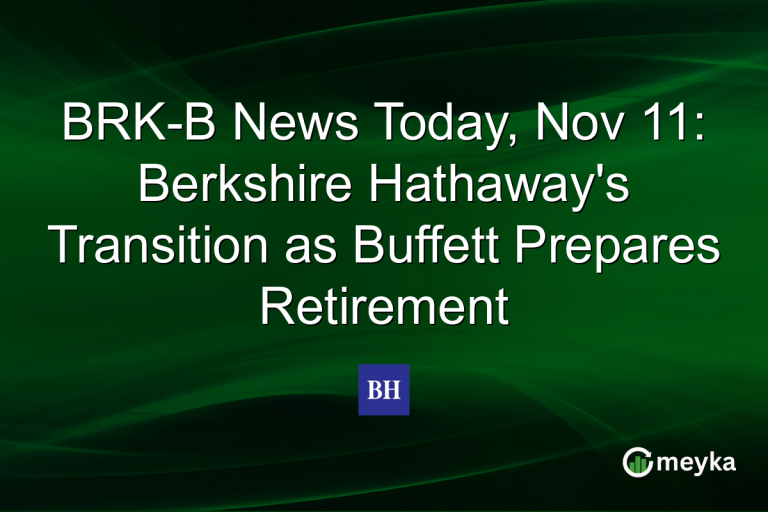JD Sports Profits and Sales Decline as Consumer Finances Remain Strained
JD Sports: Profit Decline and Sales Performance
JD Sports has reported a clear slowdown in the first half, with adjusted pre-tax profits falling and like-for-like sales under pressure. The group said adjusted profits slid 13.5% to £351 million for the six months to August 2, while total revenue rose to £5.94 billion, lifted by recent acquisitions but masking weaker trading at the store level.
Profit decline: the numbers
The headline profit drop reflects lower trading in core markets and higher operating costs. On an organic basis, the business saw like-for-like sales decline by 2.5%, while gross margin compressed slightly. Management pointed to discount pressure and tough prior-year comparators for some categories.
Why are JD Sports’ sales falling?
Consumer wallets are tighter, and demand for key brands has cooled. The retailer depends heavily on major sportswear suppliers, notably Nike, which represents roughly 45% of sales, and weaker flows from those ranges hit revenue in key markets. Discounting to drive footfall has also weighed on margins.
JD Sports: North America slowdown hits results
North America performance
JD Sports’ largest market, North America, showed a 3.8% sales decline in the half, denting group-wide momentum. The company’s U.S. portfolio, including Hibbett, Finish Line, and other banners added via acquisition, faced weaker demand, which was the single biggest drag on profitability.
What this means for investors
The U.S. slowdown matters because North America supplies nearly 40% of the group’s revenue. Management stressed the weakness is market-wide rather than structural to JD’s model, and it retained full-year guidance, a cautious sign that executives believe the issues are cyclical.
JD Sports: Store changes, cost control, and restructuring
Store footprint and closures
While total group sales rose (largely owing to acquisitions such as Hibbett in the U.S. and Courir in France), JD Sports recorded a net closure of 13 stores in the half as it reshapes underperforming locations and optimises the estate.
The move is part of a shift from aggressive expansion to leaner, more profitable operations.
Cost savings and efficiency drives
CEO Régis Schultz and the finance team flagged a renewed push on operational discipline. The company aims to extract £30 million of savings through tighter cost control and efficiency measures this financial year, while also investing selectively in higher-return areas like digital and key urban stores.
Operating costs were reported to have risen, adding short-term pressure, but the plan is to steady margins by year’s end.
JD Sports: Consumer finances, inflation, and retail competition
Consumer pressures
The retailer explicitly blamed strained consumer finances, from inflation to weaker discretionary spend, for weaker trading, especially on non-essential categories such as lifestyle trainers and replica shirts. In the UK, JD noted tough comparatives (including the boost from Euro 2024 the previous year) that masked weaker footfall this period.
Competitive landscape
Globally, sportswear demand is being squeezed by discounting and intense competition. JD’s exposure to big brands gives scale but also concentration risk: when brands tighten supply or refresh product cycles slowly, a major wholesale partner’s slowdown filters straight through to JD’s sales. That interdependence is one of the structural issues investors are watching.
Market reaction, CEO comments, and outlook
CEO and management tone
Management struck a pragmatic tone: they reaffirmed guidance for the year and emphasised discipline over quick fixes. Regis Schultz highlighted the focus on efficiencies, better stock management, and working closely with suppliers to rebuild momentum.
The company also expressed confidence that Nike’s recent strategic moves should help lift demand across JD’s assortment.
Investor response
Shares fell sharply in the run-up and after the update, reflecting investor concern about near-term demand, the stock has been down significantly over the past year as markets reassess retail exposure to consumers’ budgets.
A selection of analysts said the shares were already priced in disappointment, but warned that Christmas demand and the Nike pipeline would be decisive.
Tweet from @jzrdan highlighted investor sentiment on the results and the need for clearer evidence of a U.S. recovery.
Answers for consumers and investors
Will JD Sports meet its full-year guidance? Management reaffirmed full-year guidance while flagging risks. That means they expect to deliver current targets, but the path depends on U.S. demand and the Christmas quarter.
What does this mean for the UK high street? JD’s trimming of underperforming stores will affect some high-street locations, but the company still invests in high-performing urban stores and online, a sign of rebalancing rather than retreat.
How does JD compare with other retailers? JD’s scale and brand partnerships give it advantages, but its reliance on major suppliers creates sensitivity when brand demand softens. Recent acquisitions boosted sales but also increased complexity.
Watch: CEO interview
For direct remarks from management on strategy and the U.S. market, see the JD Sports CEO interview on YouTube, which discusses recovery plans and market focus.
Conclusion: outlook and what to watch next
JD Sports is navigating a tricky patch: profits are down, comparable sales are negative, and North America remains soft. But the company is not hunkering down; it is cutting costs, pruning stores, and leaning on brand partners to restore momentum.
The next big tests will be the Nike product pipeline, U.S. consumer spending through the holiday season, and whether efficiency measures can offset margin pressure.
For investors and analysts, those three signals will determine if JD’s short-term pain leads to a cleaner, more profitable footprint, or if the wider retail sector slowdown keeps margins under strain.
FAQ’S
The RBA’s inflation outlook remains above its 2–3% target range. Persistent price pressures in housing, energy, and food suggest cautious monetary policy before major rate cuts.
Markets expect modest easing, but higher inflation makes September rate cuts unlikely. The RBA may delay action to prevent further price growth.
Trimmed mean inflation, which removes volatile items, remains elevated. The RBA uses this measure to guide policy, indicating slower RBA Cuts than previously anticipated.
No. Interest rates were maintained near current levels as inflation remains strong. The RBA prioritizes price stability over aggressive cuts.
High inflation erodes purchasing power, so the RBA raises rates to cool spending and stabilize the economy. This prevents runaway price increases before considering RBA Cuts.
Economists predict gradual and cautious RBA Cuts, likely later in the year. Rate adjustments will balance inflation control with economic growth and market stability.
Disclaimer
This content is made for learning only. It is not meant to give financial advice. Always check the facts yourself. Financial decisions need detailed research.






